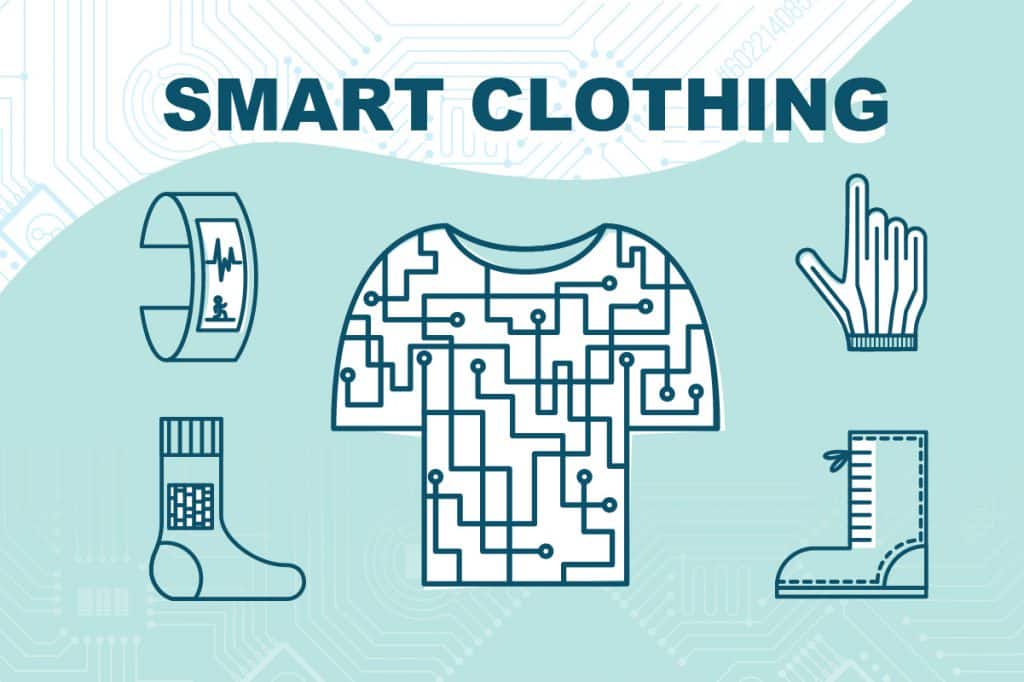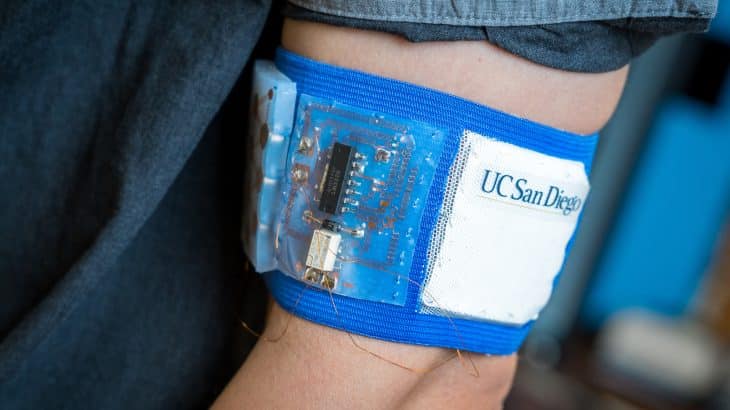Smart Clothing – Development, Trend and Application

With the rapid increasement in the popularity of mobile products, there are getting more and more people adopting various mobile devices into their daily lives. Speaking of mobile, one would think it is obvious that the more convenient the better it is. Intergrading items into what we already in need of using in our lives would be the best form of convenience.
In the past decade, we have seen a vast development in miniaturization of semiconductor technology. It can be applied to various advance materials and sensors, and it has started to appear onto consumer wearable devices. The traditional apparel industry is observing this development and progressively adopting technologies into our daily lives as clothing is something one cannot live without.
Making miniaturize semiconductor technologies embedded into apparels has become a major interest. These technologies are being designed and fabricated into different types of apparel products with different applications and hence, the new Smart Clothing market emerges.
What is Smart Clothing now?
Smart Clothing is traditional clothing items that have been enhanced with modern technology. What we have seen the most applications on the market for general consumers are for recreational use, sporting, and basic health monitoring. Aside from the mostly common seen general functions on mobile devices such as measuring heart rate, distance, speed, GPS, calories, steps, and etc., Smart Clothing can do even more.
Some of the technologies Smart Clothing has been cooperated with are listed as following:
- LED / OLED textile lighting, flexible display
- Flexible solar-panel power/lithium-ion power
- GPS/Bluetooth/fall down detection/SOS report
- Semiconductor embedded textile material/miniaturized sensors

Not only general public can benefit from the technologies listed above but also various professionals.
For the general public, the Smart Clothing technologies listed above can be applied on but not limited to:
- LED / OLED textile lighting
- Flexible solar-panel power/lithium-ion power
- GPS/Bluetooth/fall down detection/SOS report
- Location report
- Device connectivity
- Safety alert
For the professionals, the current mature and available technologies can be broken down to two major categories:
- Safety related professionals such as police, firefighters, EMS, utility workers, military personnel, and etc.
- Health professionals such as hospitals, care centers, therapeutic facilities, and etc.
An argument can be made that all functionalities Smart Clothing have and is popular among the general public consumers could also be very important to safety related professionals. They can encounter many different situations that require them to be seen, be found, and stay alive. The health professionals are often to be in a more controlled environment. Therefore, the Smart Clothing technology commonly used is:
- Semiconductor embedded textile material/miniaturized sensors
- Therapeutic massage
- Health/vital sign monitoring (heart-rate, ECG, blood pressure, temperature) – cloud connecting (via Bluetooth and mobile communication)
What’s next?
The beauty of apparels is everything that can be tailored based upon on your needs. A discussion can always be made for your specific requirements.
Many of the “Smart” items on the market are heavily interdependent on some hardware (i.e. mobile phones, computers) or software (i.e. phone apps, computer applications, websites). Making Smart Clothing having the ability to function on its own without the assistance of other applications when in need is important. In some of the situations especially it is an emergency, there isn’t time for a proper setup. How to limit the downtime or the preparation time is a very crucial requirement. Ideally, components meeting the Smart Clothing requirements should be built in the clothing application instead of relying on the features of other products such as a cellular phone, for example.

Smart Clothing should have its own intelligence. The ability of shutting itself down whether or when the use of the Smart Clothing has become dangerous to the occupied persons or deviated from the initial commands. Smart Clothing is at the bottom line – a piece of clothing. It is designed for the use of a specific part of the human body. In order for it to perform to its best ability, for it to limit user error, or for it to prevent user from harming him/herself, a fault detection should be put into place.
The proper use of any Smart Clothing accessories is extremely important. Smart Clothing has also joined the rest of the Smart products, that can also collect data and to be processed in the later stage. Anything with a collecting data functionality, the validation of data collected is a must. Regardless the purpose of collecting data, if there is any question on the data accuracy, any information provided is useless.
Smart clothing has also been seen as a way to revolutionize the practice of in the health industry, and it’s hoped that a widespread use of garments used to monitor health or help with treatment. It might reduce the overall use of costly equipment and lift the burden of currently overwhelmed healthcare systems.
Any product, from its material, technologies used, and the effects it claims to have, needs to be checked, and certified in every country. Certification processes are different in each country. Claiming to be a health care product is, of course, going through the toughest check lists. However, let’s not forget the basic of Smart Clothing, which is in close contacts to a human body. Safety of every part of a Smart Clothing product needs to be closely examed.
The future
As clothing is essential to one’s life. The future growth of the Smart Clothing market is undeniable. There sure are a lot of more functionalities for the R&D to develop and implement. The current always has the room for improvement and what works now can, for sure, be used into other areas yet to be found.









